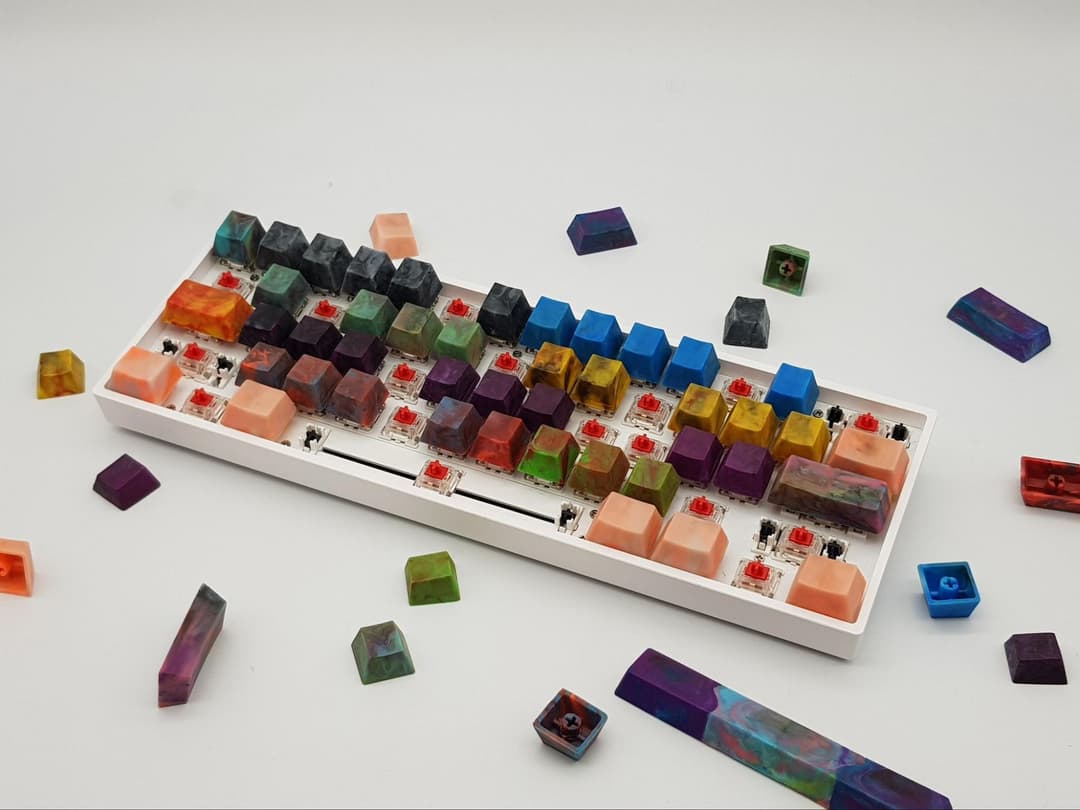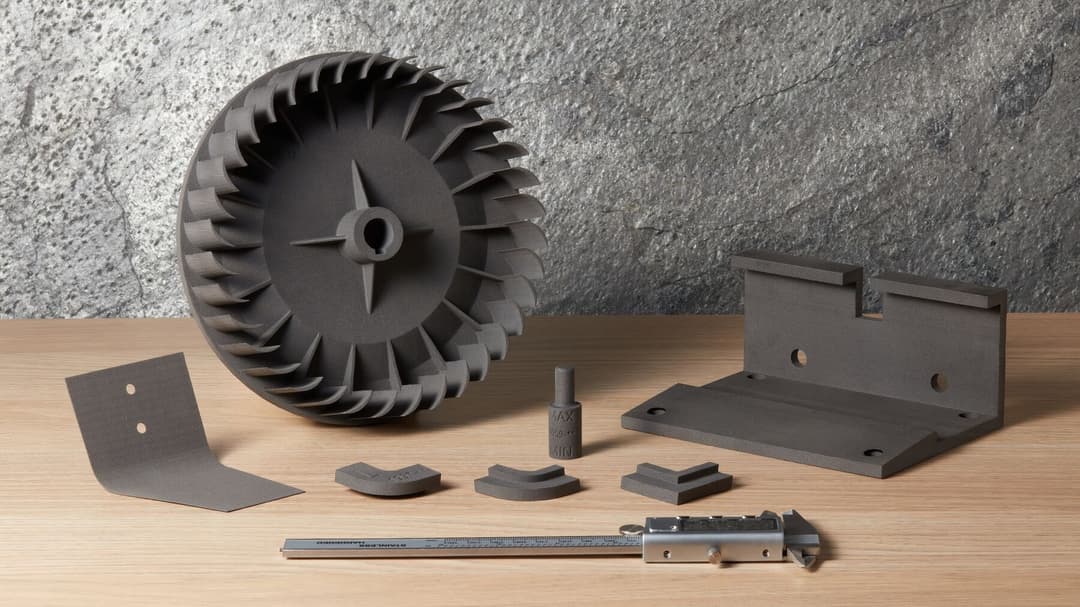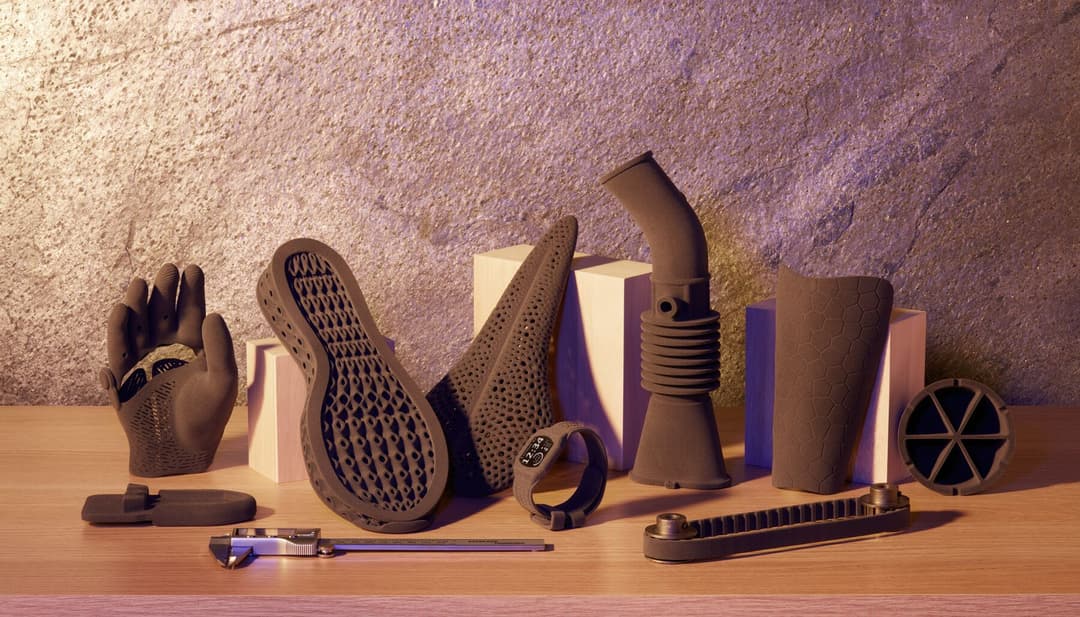
The new BBCOR Atlas is a prime example of a premium product designed with the advanced innovation techniques used at the Louisville Slugger innovation center.
America’s historical pastime and its inherent drive to look towards the future come together at the Louisville Slugger Innovation Center in Roseville, California. Since 1884 Louisville Slugger has been manufacturing baseball bats and equipment for Major League Baseball as well as college, high school, and youth teams. At the Slugger Innovation Center, product designer John Steel uses a combination of traditional and modern tools for the design and manufacturing of aluminum and composite baseball bats. “If you’re not 3D printing, you’re not going to keep up,” Steel told us. He relies on the Form 3 stereolithography (SLA) 3D printer to create both looks-like prototypes and manufacturing aids for prototype designs of the composite and aluminum bats swung by youth and collegiate players around the world.
Innovation at Slugger
Players are always looking for an edge — that little tweak that will help them swing faster and hit harder. For youth players, that edge might just be finding the right weighted bat that lets them make solid contact and keep their grip tight while they learn the game. For collegiate players, it might be an inch-wide change in their stance. Louisville Slugger both encourages and exemplifies that drive to improve at any level. Places like the Innovation Center, which focuses on equipment improvement, and their Slugger Science facility, which focus on athletic analytic improvements, are ways in which Slugger is keeping the nation’s pastime not only contemporary, but forward-looking.
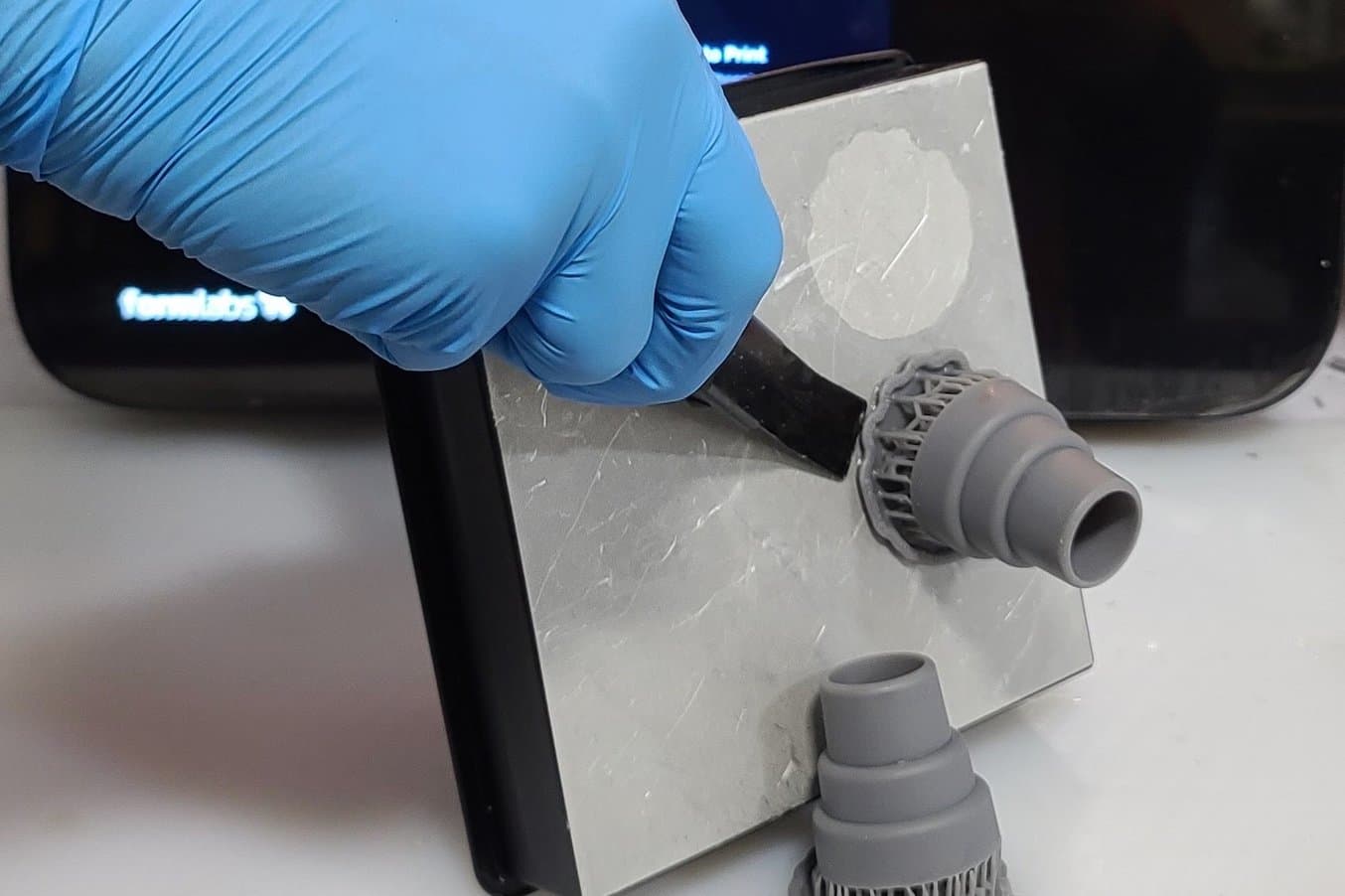
Steel removes a prototype of the Pyramid Grip component that will be used as a mold positive. The mold will then be backpoured with another material like silicone or urethane.
Speed of Development
At the Louisville Slugger Innovation center in Roseville, engineers and designers have access to whatever tools they need to develop the best products possible. Steel’s first job was at an iron and steel foundry where he learned traditional manufacturing techniques like wood patterning and CNC milling, as well as how to combine large industrial SLA and SLS 3D prints into traditional wood patterning techniques. Though the 3D prints were outsourced, the experience provided a thorough introduction to the combination of traditional and modern techniques.
He later worked at a product design startup where he was using two Form 1+ machines to rapidly iterate. “We were cranking prototypes out all day, all night, using the full bed. I built our own wash and cure back then,” Steel told us. At Louisville Slugger, Steel is again able to merge the traditional with the modern, using desktop 3D printing as well as lathes, a CNC metal shop, a composites workshop, and more.
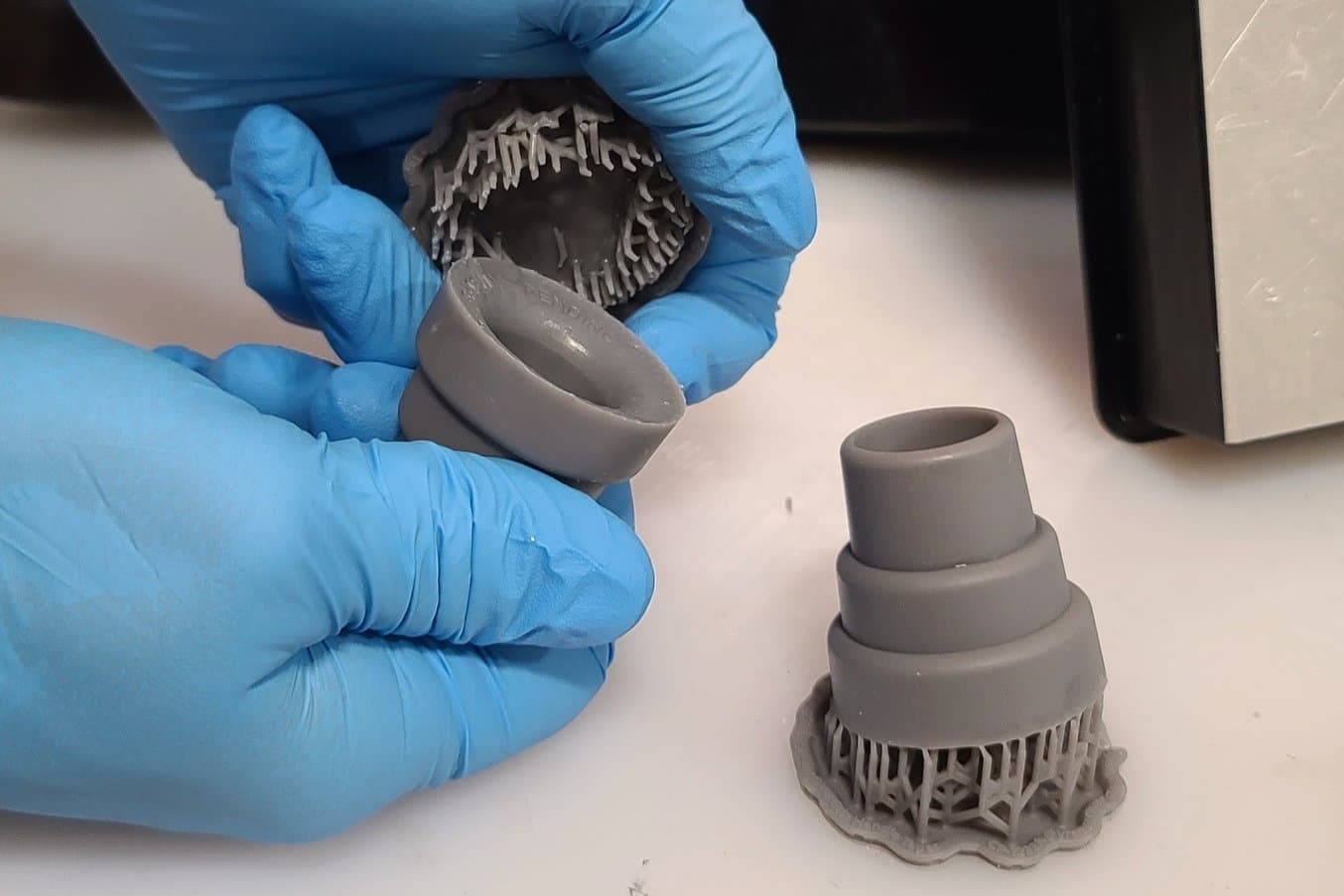
Light-touch supports make post-processing faster and easier, with less mess.
“We’re able to rapidly produce prototypes for quick iteration and testing. We use it every week, and if we’re working through a new design, we’ll iterate on it every day,” says Steel. The speed of iteration allows the Slugger team to release new products regularly, and keep up with demand for bats suitable for all different levels of play. “3D printing is a great tool to reduce the amount of time it takes to get to market. You can use it from prototyping to problem-solving. Prototyping the initial design, to problem-solving the final manufacturing,” says Steel. There’s constant competition in the market, even for a brand with such a storied history as Slugger. Steel and the innovation team are continuously iterating and pitching new ideas, and the Form 3 helps them get those ideas through to the next stage even faster.
“I’ll have an idea, design it and send it to the printer in 30 minutes, then bring it to the next meeting. 3D printed visual aids are worth their weight in gold,” says Steel. 3D printing improves team understanding of the product development process and can help eliminate any crossed wires down the road. That team cohesion enables Steel and other designers to keep their workflow streamlined and productivity high. “Oftentimes when looking at 3D renderings, we lack scale. Printing parts helps when attempting to reference how something compares in size along with being able to test ergonomics and fitment into existing products.”
Greater Control Over the Process

3D printing can speed up the iterative process, helping move a new innovation from concept design (light grey, 3D printed part, far left) to finished part made with traditional manufacturing (pink part, far right).
Though integral for prototyping, Steel also uses the Form 3 for other applications, like creating silicone molds and some other types of manufacturing aids. The diverse material library enables a wide range of possible workflows and allows Steel to gain greater control over different processes. “The Form 3 also allows us to leverage the breadth of materials available for other processes, like forming mold positives in silicone to backpour in urethane, silicone, or an epoxy,” says Steel. The molds are used to create final-stage prototypes that include all the eventual types of material, like urethane or epoxy, that will be used in the final, traditional manufacturing process.
Before, if they had wanted to get silicone parts made, they would have to get aluminum tooling, but now they can 3D print the positive geometry, then backpour in silicone, cut the silicone mold apart, and then use the resulting negative to create other types of parts, like functional prototypes. “SLA has a very fine fidelity and holds tight tolerances. This not only provides us with parts within spec, but it also alleviates much of the post-processing required on the mold positive. When molding, you want as smooth of a surface finish as possible on your mold positive to ease part removal from the mold. Some texturing is okay, but the grooving caused by layer stackup is where things get tricky and the quality of the Form print layers is never an issue. Plus, post-processing these materials is super easy,” says Steel.
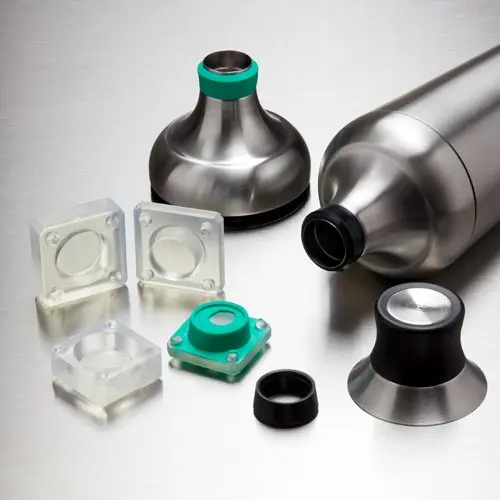
Silicone Molding For Product Design
Download this report for case studies featuring OXO, Tinta Crayons, and Dame Products that illustrate three different implementations of silicone molding for product design and manufacturing, including overmolding and insert molding.
Outsourcing is a common, and typically necessary, part of any manufacturing process at some stage. But when multiple stages have to be outsourced, timelines can get pushed back, and product development will stagnate. Taking control of even one more part of the process can give greater control to the designer. In the silicone molding example, iterating the positive and practicing the silicone pour process can illuminate flaws in the design that would otherwise take weeks of waiting and testing to uncover when using an outside vendor.
“3D printers are the easiest technology to make something on quickly —- you’re able to sketch it out then produce it yourself, rather than have to hand it off to a specialist and wait to get it back to then test,” says Steel.
Using a 3D printed master, Steel pours silicone to create tooling for a prototype of the Pyramid Grip.
After the silicone mold is created, Steel can inject another material like urethane or epoxy to create the finished prototype.
Eye on the Ball
Looking forward, Steel is working on expanding the number and range of ways to use 3D printing, including in manufacturing. “Creating tools with the printer can be more valuable than creating parts,” he says. Though Slugger uses 3D printed tools like the silicone mold positives already, the problem-solving ability of 3D printing means that there’s more to come. “Good equipment makes the sport more fun to play, and that’s what the Innovation Center is all about,” says Steel. “We’re using technology like the 3D printers to keep improving, and we’re constantly looking at what’s next."
